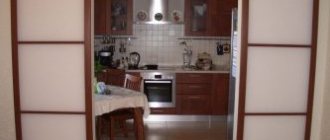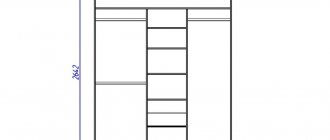A door closer is a special mechanism designed to automatically close operational, fire safety, entrance structures and structures equipped with an access control system. Often its parts and connections wear out and fail. The doors do not close, and may also move too slowly or, conversely, quickly, with a knock or slam. When the breakdowns are minor, specialists adjust the parameters of the device; in case of complex defects, they repair the door closer.
Depending on the type and model of the door mechanism, its defects and breakdowns, repairs are carried out either independently, but at the same time they find out the cause of the malfunction, or they call the technician who installed the mechanism.
Correct, efficient, trouble-free operation, which is a guarantee of the comfort and safety of people, is a property that shows what a closer should be. Proper initial installation, adjustment of device parameters, compliance with all operational requirements affect the quality of its work.
Frequent malfunctions
Malfunctions of the door device can be as follows:
- damage or breakage of the rod;
- the appearance of cracks in mechanism elements;
- bend, kink of the lever;
- linkage sticking;
- wear of seals;
- breakage of fasteners.
The following factors lead to these defects:
- improper operation of the mechanism;
- external influences on the door block (impacts, strong wind);
- placing a stone or foreign object to secure the door in the open position.
Damage can be corrected by repairing the door closer yourself. If the defect cannot be eliminated, then the mechanism is purchased.
Door closer device
This device consists of the following mechanisms and parts:
- spring;
- cast aluminum housing;
- precision piston;
- control valves;
- gears;
- needle bearing;
- rubber seals;
- fasteners.
The mechanism of operation of the closer is arranged as follows.
The main element of the design is a spring mechanism, which, when compressed, accumulates the energy necessary to close the doors. The compression process occurs by transferring the force of the lever rod to the spring. Toothed gears and racks drive the piston, while oil flows through internal passages into the free part of the housing. Adjusting the fluid flow rate affects the closing speed.
If the oil does not enter the released body of the device and leaks due to depressurization, then the door mechanism does not work. The problem can be solved with the help of repairs.
Leakage of working fluid
Oil leakage occurs due to large fluctuations in ambient temperature. Leaks often appear during the cold season. The thickness of the oil fluid directly depends on temperature changes.
The second reason for oil leakage is depressurization of the box, which occurs when it is damaged. If the defect is not severe, it must be eliminated using a simple sealant. If the crack is large or the oil has completely leaked out, sealant repair methods will not give a positive result, so the closer is replaced.
In cases of weak liquid filling at the factory, it is added to the door device. In this case, choose synthetic motor oil or shock absorber fluid. Oil is filled through control valves.
Damage to the lever mechanism
In case of malfunctions in the operation of the mechanism, pay special attention to the rod, check its condition and presence of damage. At the slightest malfunction, repairs are carried out.
You can fix the problem yourself. Before repairing a damaged rod, you should read the instructions for repairing and installing the door closer and act according to them.
Benefits of use
Installation of closer
Such equipment is designed to automatically close the door. In addition, this design increases the service life of door handles and hinges - they wear out less.
When using a damper in a door closer, which is equipped with damping and braking functions, it is more convenient for a person to freely pass and carry loads through doorways.
In this case:
- The door can be locked in the open position;
- A sliding effect appears; when the door is closed, it slows down smoothly;
- The “slam” of the door leaf is adjusted until it fits snugly to the doorway.
Advice: When purchasing a door closer, you should pay attention to the likelihood of restoring and repairing the mechanism if malfunctions occur with your own hands.
Causes of breakdowns
High-quality repair of a door closer is possible only if the causes of defects and damage are correctly identified.
The causes of breakdowns may be:
- unfavorable, cold weather conditions;
- sudden opening and closing of doors;
- blocking the movement of the door leaf;
- closer overload.
Factors that determine whether repairs are possible
Manufacturers are not interested in affordable repair of door devices. Most of them have an all-alloy body. For such models, repair work is difficult. Damage such as worn seals or oil leakage cannot be repaired. Therefore, the closer must be dismantled and replaced.
The main importance in the reliable and efficient operation of the mechanism is the correct adjustment of the door device immediately after its installation.
Closer installed on the hinge arm
Yes, there is this type of closers. The main thing is that they fit your loops. This system is installed directly on the hinge arm. Be sure to consult with the seller so as not to waste your money.
If you are limited in finances and this system does not fit the fittings installed on your furniture, you can first replace the hinges with simple ones from the same manufacturer, and then purchase this finishing system.
Troubleshooting
Repairing a door closer with your own hands is not difficult.
If rod defects occur, carry out the following actions:
- If there is rust, anti-corrosion cleaning is done and treated with a special protective lubricant.
- If a small crack or break occurs, the welding method is used, after which the welds are ground to a smooth state without slag inclusions, sagging, or formations.
- Distortions or bends are carefully leveled using a hammer so that the lever does not burst under the influence of force.
If the door speed is abnormal, the device is adjusted.
How to repair
To repair breakdowns in the closer device, the following tools are required:
- screwdriver;
- keys;
- pliers;
- screwdriver.
If complex defects are identified, a hammer or welding machine is required to correct them.
The procedure for carrying out repair work is as follows:
- Carefully inspect the closer body. There should be no leakage in a housing filled with oil.
- Check the security of the mounting screws. If the part is tight or loose, tighten it to the required level.
- Inspect the door block, the place of fastening and contact with the frame for cracks and dents that lead to distortion of the structure.
- Check the operation of the closer levers.
- Adjust the speed of closing and opening doors, slam, maximum swing angle.
- If damage is detected, repair the part.
- After the procedure, install the closer in place.
If the defect cannot be corrected independently, this situation can be resolved by replacing the closer.
How to install
The installation of expensive mechanisms on luxury furniture is carried out by professionals at the factory. Theoretically, you can buy, for example, an electric programmable door closer, but it will cost more than a cabinet. Therefore, we will focus on gas models available to the amateur.
Installation locations and installation
One of the simplest models is considered to be mortise. When it comes to upper-level wall cabinets, such a shock absorber is mounted on the upper or middle sector of the cabinet opposite the doors. In the lower sector, on the contrary, it is cut in from below so that it does not interfere.
A mortise closer installed in the side wall of the cabinet should not interfere with operation.
The insertion technology is simple. The thickness of the rod in such mechanisms does not exceed 10–12 mm, and the thickness of kitchen furniture slabs ranges from 16–21 mm. Having decided on a place you need:
- Take a drill corresponding to the diameter and length of the closer rod;
- Mark the installation point in the center of the cabinet end and mark it with an awl;
- Carefully drill a hole to the depth of the rod;
- Insert the closer into the hole.
There is no need to attach the mortise closer to glue. Once you insert the rod into the hole, it won't go anywhere. And if you glue it, then if it breaks, you won’t be able to replace it.
Pencil-type shock absorber insertion diagram.
There is one nuance in the installation of pencil mortise closers - it is difficult for an inexperienced craftsman to drill a blind hole evenly in a thin cabinet wall. If you deviate slightly from the axis, the drill will come out through the side wall, thereby irreversibly damaging the cabinet.
If you are not confident in your abilities, then it is better to give preference to the overhead option. It is already really the simplest. Overhead closers have stops on the side, so they don’t need markings. You apply the mechanism to the selected location and secure it with a pair of self-tapping screws.
Even an amateur armed with only a screwdriver can secure the overhead mechanism.
But the developers of such accessories went even further. The fact is that a standard furniture hinge has fixed dimensions and the designers made an overlay for it with a closer. You simply buy such an overlay and put it on the loop.
Shock-absorbing hinge latches are considered the most practical.
Adjustment
Simple models are adjustable and non-adjustable. In those mechanisms where adjustment is possible, you will find either a thumb in the center or an adjusting screw on the back of the structure. Adjustment is carried out either clockwise or counterclockwise.
Even simple models of branded door closers provide fine adjustment.
But don’t be upset if the mechanism you purchased turns out to be non-adjustable. In this case, the issue is resolved by fine adjustment of furniture hinges, because standard hinges can be adjusted in 3 planes. The diagram below shows the adjustment screws.
If necessary, the fit of the door is adjusted using furniture hinges.
Adjustment
Carrying out adjustments is a mandatory measure not only during operation of the mechanism, but also for prevention. The procedure is performed at least 2 times a year, and with seasonal temperature fluctuations this is done more often.
Adjusting the device consists of adjusting the speed of closing the door block using adjusting screws, pressing it against the frame, and smoothly decelerating when the doors are completely closed.
Repairing door closers is a simple technological process that, most often, even a novice master can do.











